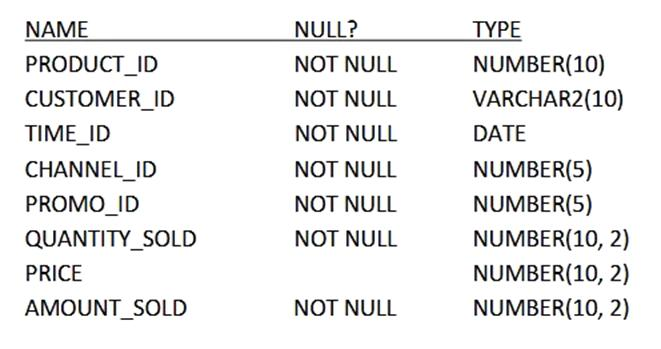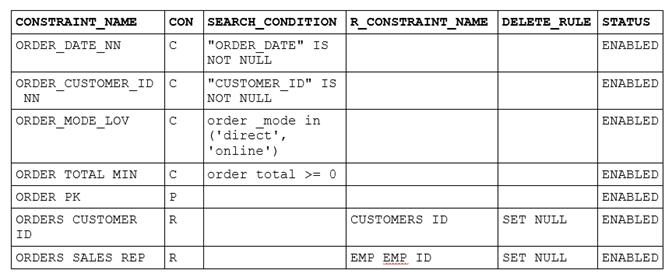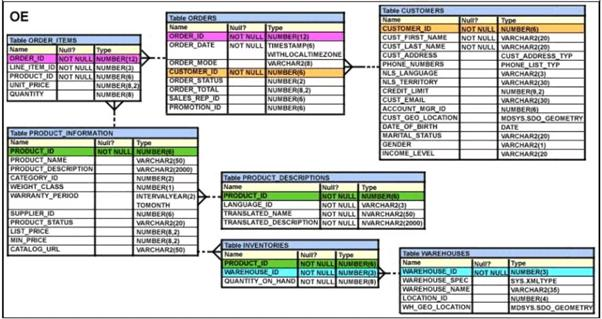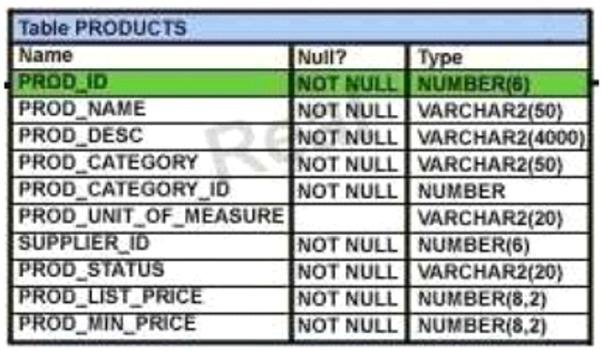Question: 1
View the exhibit and examine the description of the EMPLOYEES table. (Choose two.)

You executed this SQL statement:
SELECT first_name, department_id, salary
FROM employees
ORDER BY department_id, first_name, salary desc;
Which two statements are true regarding the result?
Question: 2
Examine the structure of the SALES table. (Choose two.)

Examine this statement:
SQL > CREATE TABLE sales1 (prod_id, cust_id, quantity_sold, price)
AS
SELECT product_id, customer_id, quantity_sold, price
FROM sales
WHERE 1 = 2;
Which two statements are true about the SALES1 table?
Question: 3
Examine this SELECT statement and view the Exhibit to see its output: (Choose two.)

SELECT constraints_name, constraints_type, search_condition, r_constraints_name, delete_rule, status,
FROM user_constraints
WHERE table_name = 'ORDERS';
Which two statements are true about the output?
Question: 4
View the Exhibit and examine the structure of ORDERS and CUSTOMERS tables. (Choose the best answer.)

You executed this UPDATE statement:
UPDATE
( SELECT order_date, order_total, customer_id FROM orders)
Set order_date = '22-mar-2007'
WHERE customer_id IN
(SELECT customer_id FROM customers
WHERE cust_last_name = 'Roberts' AND credit_limit = 600);
Which statement is true regarding the execution?
Question: 5
View the Exhibit and examine the structure of the PRODUCTS table. (Choose the best answer.)

You must display the category with the maximum number of items.
You issue this query:
SQL > SELECT COUNT(*), prod_category_id
FROM products
GROUP BY prod_category_id
HAVING COUNT(*) = (SELECT MAX(COUNT(*)) FROM porducts);
What is the result?